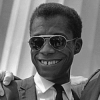James A. Baldwin

James A. Baldwin
James A. "Jim" Baldwinwas an American football player, track athlete, coach of football, basketball, and baseball, and college athletics administrator. He served as the head football coach at Rhode Island State College—now the University of Rhode Island, the University of Maine, Trinity College in Durham, North Carolina—now Duke University, Lehigh University, and Wake Forest University, compiling a career college football record of 41–32–14. Baldwin was also the head basketball coach at the same five schools, amassing a career college basketball...
NationalityAmerican
ProfessionAuthor
Date of Birth2 August 1924
CountryUnited States of America
The purpose of art is to lay bare the questions which have been hidden by the answers.
The writer's only real task: to recreate out of the disorder of life that order which is art
The states of birth, suffering, love, and death, are extreme states: extreme, universal, and inescapable. We all know this, but we would rather not know it. The artist is present to correct the delusions to which we are all prey in our attempts to avoid this knowledge." - James Baldwin, "The Creative Process
The artistic image is not intended to represent the thing itself, but, rather, the reality of the force the thing contains.
All art is a kind of confession.
There are, forever, swamps to be drained, cities to be created, mines to be exploited, children to be fed ... But the conquest of the physical world is not man’s only duty. He is also enjoined to conquer the great wilderness of himself. The precise role of the artist, then, is to illuminate that darkness, blaze roads through vast forests, so that we will not, in all our doing, lose sight of its purpose, which is, after all, to make the world a more human dwelling place.
Life is more important than art; that's what makes art important.
It is only because the world looks on his talent with such a frightening indifference that the artist is compelled to make his talent important.
The purpose of art is to lay bare the questions that have been hidden by the answers.
The primary distinction of the artist is that he must actively cultivate that state which most men, necessarily, must avoid: the state of being alone.
Artists are here to disturb the peace.
Most of us, no matter what we say, are walking in the dark, whistling in the dark. Nobody knows what is going to happen to him from one moment to the next, or how one will bear it. This is irreducible. And it's true of everybody. Now, it is true that the nature of society is to create, among its citizens, an illusion of safety; but it is also absolutely true that the safety is always necessarily an illusion. Artists are here to disturb the peace.
One writes out of one thing only--one's own experience. Everything depends on how relentlessly one forces from this experience the last drop, sweet or bitter, it can possibly give. This is the only real concern of the artist, to recreate out of the disorder of life that order which is art.
Societies never know it, but the war of an artist with his society is a lover's war, and he does, at his best, what lovers do, which is to reveal the beloved to himself and, with that revelation, to make freedom real.